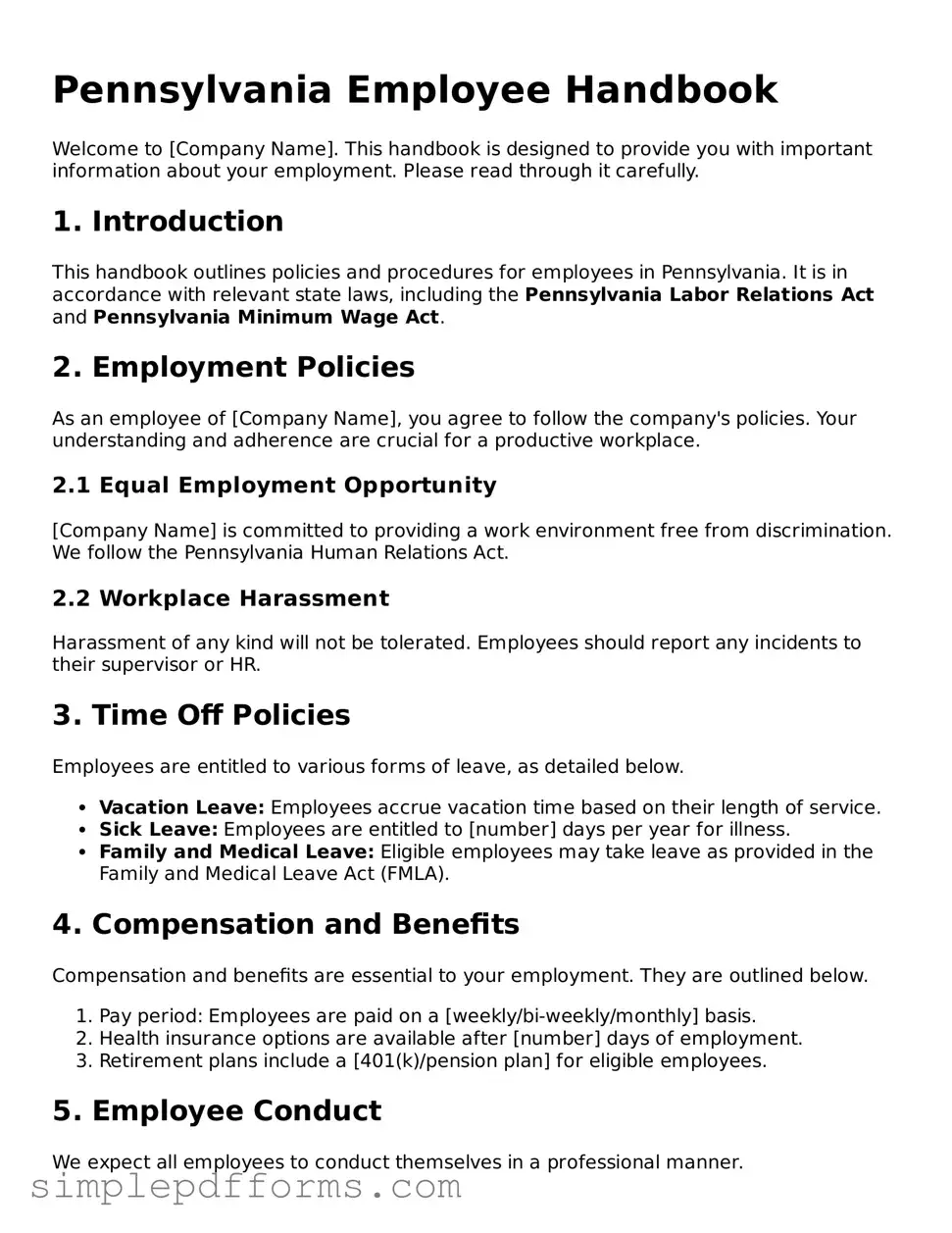Pennsylvania Employee Handbook
Welcome to [Company Name]. This handbook is designed to provide you with important information about your employment. Please read through it carefully.
1. Introduction
This handbook outlines policies and procedures for employees in Pennsylvania. It is in accordance with relevant state laws, including the Pennsylvania Labor Relations Act and Pennsylvania Minimum Wage Act.
2. Employment Policies
As an employee of [Company Name], you agree to follow the company's policies. Your understanding and adherence are crucial for a productive workplace.
2.1 Equal Employment Opportunity
[Company Name] is committed to providing a work environment free from discrimination. We follow the Pennsylvania Human Relations Act.
2.2 Workplace Harassment
Harassment of any kind will not be tolerated. Employees should report any incidents to their supervisor or HR.
3. Time Off Policies
Employees are entitled to various forms of leave, as detailed below.
- Vacation Leave: Employees accrue vacation time based on their length of service.
- Sick Leave: Employees are entitled to [number] days per year for illness.
- Family and Medical Leave: Eligible employees may take leave as provided in the Family and Medical Leave Act (FMLA).
4. Compensation and Benefits
Compensation and benefits are essential to your employment. They are outlined below.
- Pay period: Employees are paid on a [weekly/bi-weekly/monthly] basis.
- Health insurance options are available after [number] days of employment.
- Retirement plans include a [401(k)/pension plan] for eligible employees.
5. Employee Conduct
We expect all employees to conduct themselves in a professional manner.
- Arrive at work on time and ready to start your shift.
- Dress appropriately for your role as outlined in the dress code policy.
- Communicate respectfully with coworkers and supervisors.
6. Health and Safety
Your safety at work is a priority. Follow all health and safety guidelines provided.
- Report any unsafe conditions or accidents to [designated person].
- Participate in safety training sessions as required.
7. Acknowledgment of Receipt
By signing below, you acknowledge that you have received and read the Pennsylvania Employee Handbook.
Employee Name: _________________________________
Signature: ______________________________________
Date: ___________________________________________
Contact Information
If you have questions about any policies, please contact [HR contact information].
